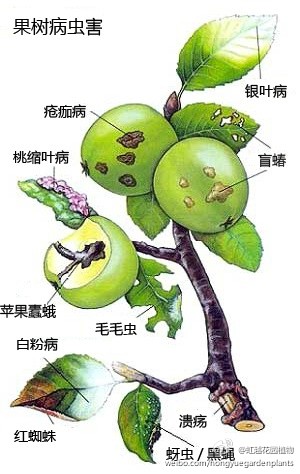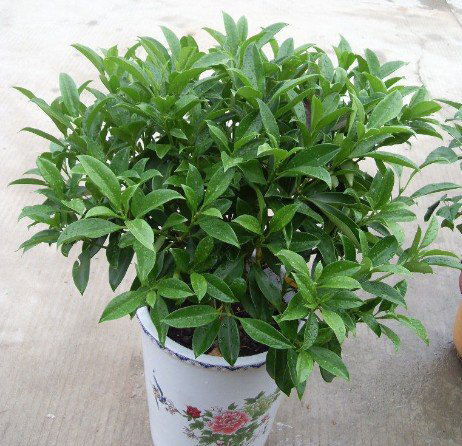The leaves of the dragon blood tree turn yellow.
Dragon blood trees not only like a warm, moist and sunny environment, but also can withstand shade. However, in indoor breeding, if placed in too shady environment for a long time, it will also cause the leaves to fade. So it is best to put the flowerpot on the southeast windowsill to make it fully exposed to the sun. If the dragon blood tree is cultivated on the balcony, when the summer sun is too strong, the flowerpot should be moved indoors, especially at noon, it should be shaded properly, and the illumination should be 40-50%, so as not to burn the leaves in the scorching sun. Dragon blood tree likes to be warm and can't bear the cold.

Lack of light
[reason] Dragon's blood tree not only likes a warm, humid and sunny environment, but also can withstand shade. However, if placed in too shady environment for a long time, it will also cause the leaves to fade.
[method] put the flowerpot on the southeast windowsill to make it fully exposed to the sun.
The temperature is too low
[reason] the dragon blood tree likes warmth and is not resistant to severe cold. The most suitable growth temperature is 20-28 degrees Celsius. If the summer temperature exceeds 32 degrees Celsius or the winter temperature is lower than 15 degrees Celsius, the tree will be dormant or semi-dormant. The temperature is too low, because the root system does not absorb enough water, the leaf tip and leaf edge will appear yellowish brown patches.
[methods] keep away from the air conditioner in summer to prevent the temperature from being too low and cause physiological diseases.
Disease and insect damage
[reason] keep the dragon blood tree on the balcony or indoor windowsill for a long time, it is easy to grow red spiders. Dragon blood tree suffered from its harm, the leaves faded, chlorophyll was destroyed, the surface appeared dense small yellow spots, small macula, and gradually atrophied, yellowed, withered, serious shedding, losing its due ornamental value.
[methods] Red spiders often hide on the back of branches and leaves or in dense places, so it is easy to catch them manually. If it is treated with chemicals, 20% trichloroacarol emulsion can be added with 800 times of water to make a solution spray, which has a good killing effect on adults, nymphs and eggs.
Soil discomfort
[reason] Dragon blood tree likes loose, good drainage, humus nutrient-rich soil, soil pH is not suitable will lead to dragon blood tree leaves yellowing.
[methods] Dragon blood tree likes acidic soil, which can be adjusted by ferrous sulfate or sprayed with foliage.
The cause of the yellowing of the leaves of the dragon blood tree how to do the yellow leaves of the dragon blood tree
Dragon blood tree is one of the longevity trees in the world, but its leaves may turn yellow if it is careless in the process of breeding. So, what is the reason why the leaves of the dragon blood tree turn yellow? What if the leaves of the dragon blood tree turn yellow? Let's take a look at the reasons.
The reason why the leaves of the dragon blood tree turn yellow:
The basin has not been changed for a long time.
Although the dragon blood tree is a longevity master with strong vitality, it is also uncomfortable if you have to keep it as a picked-up child for a long time.
If the pot is not changed for a long time, the growth space of the plant root system is insufficient, the ability to absorb nutrients decreases, the plant condition becomes worse, and the leaves turn yellow.
I hurt my root while changing the basin.
In many cases, some injuries are inevitable, who can guarantee that I can dig a complete potato with a hoe?
It's the same with changing pots, always try your best to be careful, but it doesn't work, it still hurts the roots. After injuring the root system, the dragon blood tree on the pot can not be maintained normally and needs to wait for it to slow down.
In the process of slowing down the seedlings, there will be leaves yellowing, or even falling.
Improper management of water and fertilizer
The new leaves of the dragon blood tree are yellow, it is not enough water, if the old leaves are yellow, it is not enough nutrients.
Dry air can also lead to yellowing of leaves due to lack of moisture.
The obstruction of diseases and insect pests
There is a large area of leaf fall, which may be caused by root rot or insect pests. At this time, check the root system, and then check the leaves for eggs.
What if the leaves of the dragon blood tree turn yellow:
Change the basin
Dragon blood tree can be changed every 2-3 years, the basin as far as possible to choose a little larger, to give enough room for growth, bondage, there will never be a thriving plant.
When changing the basin, not try to avoid damaging the root system, but try your best to avoid injuring the root system, do your duty, or hurt, then let it slow down, it's all right, it's very strong!
Watering and fertilization go hand in hand
Dragon blood trees can be applied thin and diligently in spring, summer and autumn, except that there is no need to apply fertilizer in winter. The basin soil remains moist and can spray water to the leaves and spray to the top of the plant if necessary to increase air humidity.
The dragon blood tree that has been kept in the shade for a long time can also bask in the sun properly, carry out photosynthesis and smell the smell of the sun.
The appearance of diseases and insect pests is unbearable.
The emergence of diseases and insect pests, must be timely inspection, timely spraying, timely rescue of those leaves that have not yet yellowed.
- Prev

Map of diseases and insect pests of flowers
The disease and insect pest maps are scattered. The following pictures are a collection of several kinds of common flower pest maps, as well as fruit tree pest maps, rose pest maps and Qiao Zhi pest maps.
- Next

The reason for the yellowing of African jasmine leaves
African jasmine is easy to adapt to unfamiliar environment and can be planted in courtyards and balconies. African jasmine branches as emerald, leaves shiny, flowers slightly fragrant, elegant flowers, each five-petal, umbrella-shaped, clustered at the top of the flower branch. The flowering period is very long, blooming in winter and summer, and blooming most brightly in spring and summer.
Related
- Fuxing push coffee new agricultural production and marketing class: lack of small-scale processing plants
- Jujube rice field leisure farm deep ploughing Yilan for five years to create a space for organic food and play
- Nongyu Farm-A trial of organic papaya for brave women with advanced technology
- Four points for attention in the prevention and control of diseases and insect pests of edible fungi
- How to add nutrient solution to Edible Fungi
- Is there any good way to control edible fungus mites?
- Open Inoculation Technology of Edible Fungi
- Is there any clever way to use fertilizer for edible fungus in winter?
- What agents are used to kill the pathogens of edible fungi in the mushroom shed?
- Rapid drying of Edible Fungi

